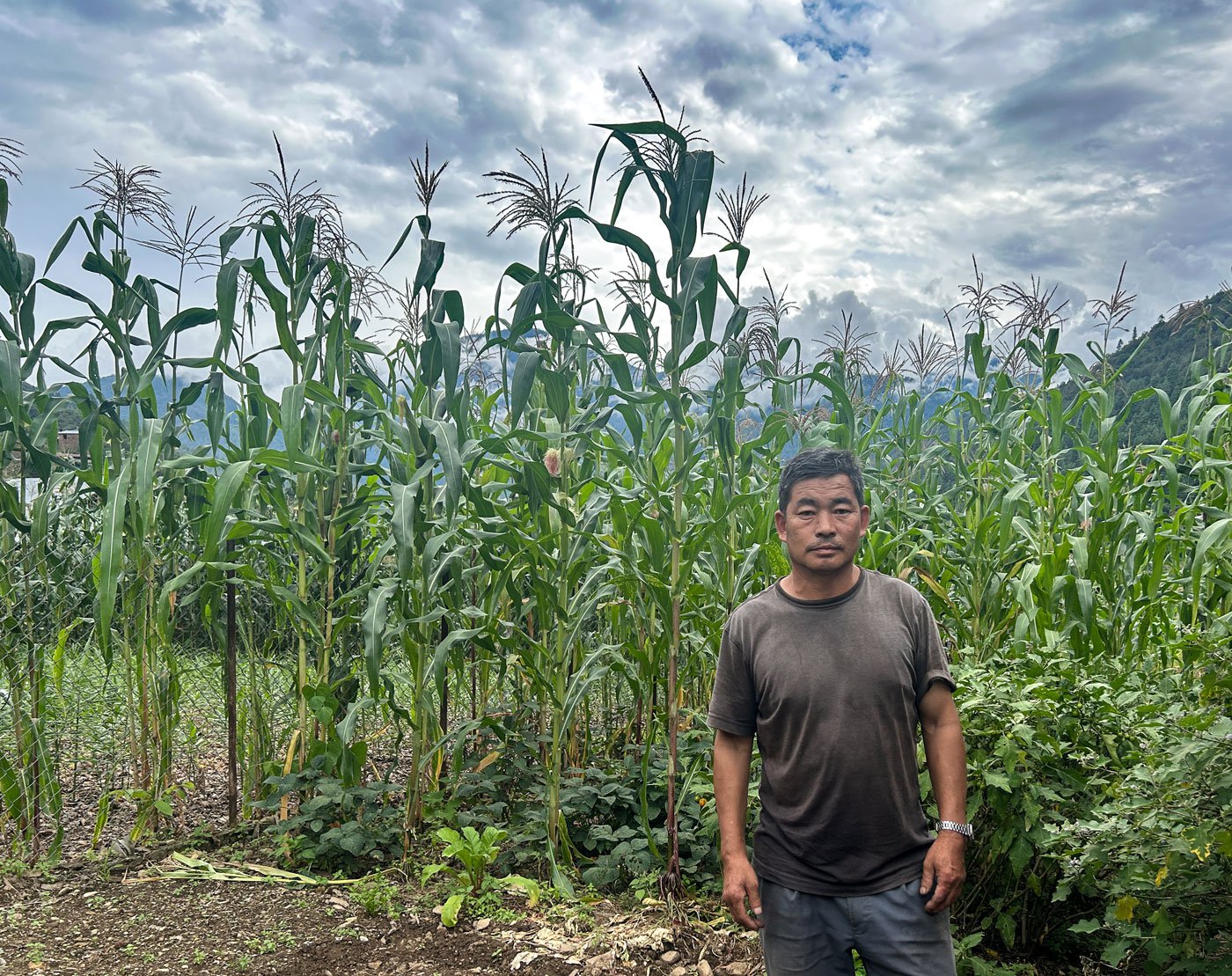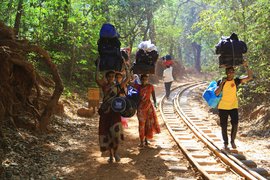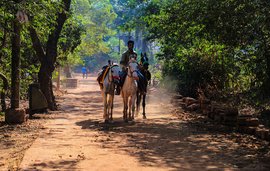When Karchung sings at Monpa weddings, he comes away with a portion of cooked lamb for his services. His musical rendition is said to honour the marriage ceremony, and it’s the bride’s family that invite him.
When two members of the Monpa community agree to marry, they observe a two-day ritual that starts with the groom going to the girl’s house where the local brew
ara,
is drunk, and family members sing and dance at a grand feast. It is here that Karchung performs without the aid of any instrument. The next day the groom returns home with his new bride.
Karchung originally went by the name Rinchin Tashi, but soon his nickname ‘Karchung’ stuck. He runs a small grocery shop on the Changpa road in West Kameng district of Arunachal Pradesh. His love for music shows in the radio music that plays hit numbers in the background while he works. Karchung can also sing a song about
ara
. “I sing it while farming or chatting with friends,” he says.
The 53-year-old lives with his wife, Pem Jomba who he says is the ‘boss’ in the family. It is Pem who farms their roughly one acre of land in the fertile valley. “We grow rice, maize, brinjal, bitter eggplant,
lai saag
(mustard leaf), onion and cauliflower,” he says. The family consume most of the rice, millets and vegetables they grow, and sometimes sell any extra produce in the weekly market of Rama camp in Dirang block.

Leiki Khandu and his father Karchung in front of their store on the Changpa road in West Kameng district of Arunachal Pradesh


Karchung is shaping a drum to be played in festivals. Right: His son, Leiki Khandu shows a dadar , a ritual arrow used for summoning life forces, longevity, good luck and prosperity. The colourful ribbons attached represent the five elements . A dadar is rotated clockwise in rituals and Buddhist temples
The couple have five children – two daughters and three sons. Both girls Rinchin Wangmu and Sang Drema are married and sometimes drop in. The elder son Pem Dondup lives in Mumbai and works as a chef in a hotel and manages to visit only once in two years. Leiki Khandu, the middle son, is a musician and part of a sustainable tourism initiative in the valley. Nim Tashi, his younger son works in Dirang town.
The Monpa community trace their origin to Tibet, and many are Buddhists, skilled in wood work, weaving and painting. Their numbers are 43,709 according to this 2013 government report .
Karchung is not only a musician but also a maker of percussion instruments in his free time. “A drum [locally called
chilling
] costs around 10,000 rupees in the market. In my leisure time, I can make mine,” he tells PARI.
He breaks into song when we request him to sing, seated in the backyard of his shop, surrounded by the vegetables and corn they grow. These oral songs have been passed down through generations and some have words with Tibetan origins which he struggles to explain to us.
Monpa wedding song:
Mazange Bomo Rogzang mo
Rizange bomo janzangmu
Lonpo ngala yowe dadar de
Duizang naka nange dadar
Zukso chake ne
Gepa umze chenge dungve
Nungma chisumo dene ne
Tsari langkor nungma
Gola karve grone ne
Thangkar kepoi kro yin
Gola karve bumpa ne
Yeshi Khando me gru yin
Sun danga sugi jamo yin
Diring lonpo ngalang jamo yin
Rough translation
Daughter of beautiful and good mother
The girl’s eye is like gold
The girl wore a beautiful attire
And everyone likes the girl
Dadar* worn by the girl
Makes her more beautiful
Metal on the Dadar
Made by God of iron is her jewellery
Bamboo from the Dadar
Brought from Lhasa (Tibet)
The stone on the Dadar
From milk of angel Yeshi Khandroma
Feather on the top
From Thung thung karmo**
*Dadar is a ritual arrow. It is used for summoning life-forces, longevity, good luck and prosperity. The colourful ribbons attached represent the five elements and the five Dakinis. Dadar is rotated clockwise in rituals and Buddhist temples
**Thung thung karmo or feather of the Black-necked crane - a Himalayan bird famous for its long travels at high altitudes



